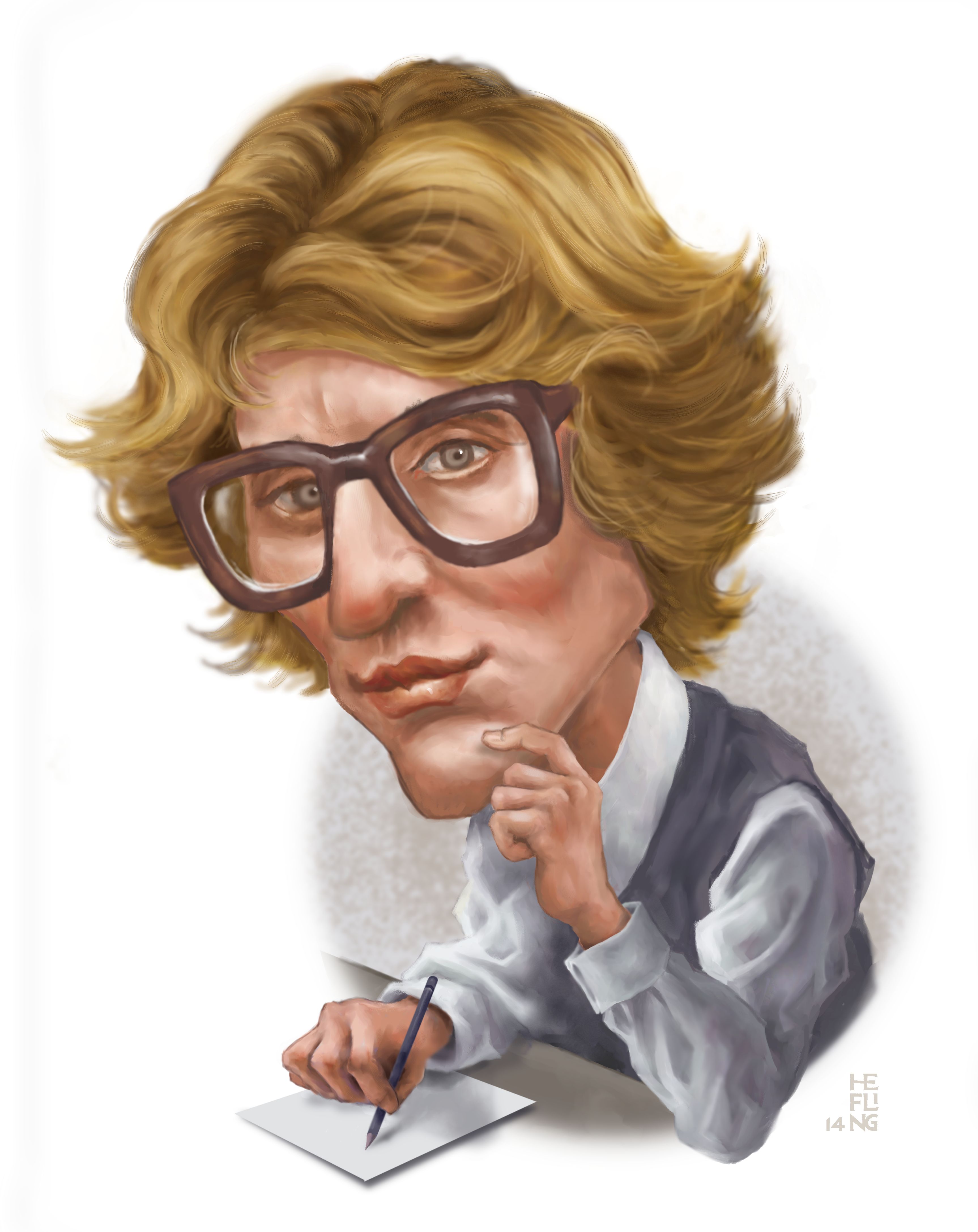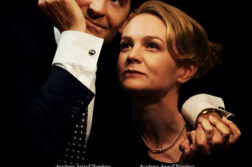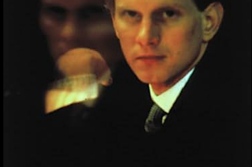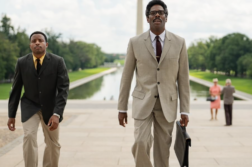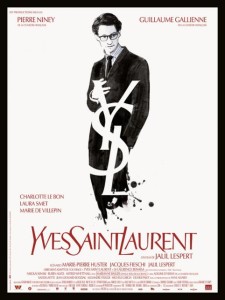 Yves Saint Laurent
Yves Saint Laurent
Directed by Jalil Lespert
The Weinstein Company
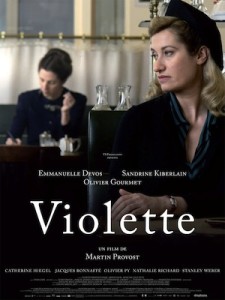 Violette
Violette
Directed by Martin Provost
Adopt Films
ONE OF THE PITFALLS of any biopic is the lead actor’s temptation to do a full-throttle imitation of the person whose life story is being told. Unless you’re Meryl Streep channeling Margaret Thatcher or Julia Child, or Marion Cotillard as Edith Piaf, the results can seem like bad parody. A recent entry to the genre is the French film Yves Saint Laurent, about the young French-Algerian genius who at 21 took over the haute couture house of Christian Dior. The performance by the young Pierre Niney as Saint Laurent has to enter the annals of great star-making turns. Niney, a stage actor with the renowned Comédie Française, gives us a richly layered, three-dimensional portrait of the intensely shy Yves Saint Laurent, a gay prince from a family of the haute bourgeoisie in Oran who came of age as the Algerian War of Independence was taking root.
Saint Laurent’s rapid ascent in the Parisian fashion world is seen as the result of his intense inner drive and confidence in his own talents, given public voice in his early press interviews. He makes good with the crucial help of Pierre Bergé, his lover, mentor, companion, and soul-mate. In real life, Bergé was Yves’ senior by only six years but was by temperament far more stable and acted as something of a father figure. Together the two men would build the YSL fashion empire.
Two early moments set the stage for an understanding of the young genius’s psychology. In 1960, Saint Laurent is drafted into the army at the time of the Algerian War, an eventuality he has feared and for which he is temperamentally unsuited. And we know why: a sensitive and creative gay man, almost painfully shy, will be asked to hold a gun and make war. Almost immediately, he suffers a nervous breakdown and enters a military hospital. Bergé goes off to attend to his lover, who has shriveled to a shadow of his former self, turning his face to the wall and barely eating. A diagnosis of manic depression facilitates his departure from military service. In the meantime, the house of Dior has fired Saint Laurent since, in his mental state, he’s not capable of working, although this is merely a screen for the administration’s loss of confidence in his talent: after a wildly successful first-season launch, his work had not fared as well in the next two shows.
Again, Bergé takes the reins, suing Dior for a considerable sum and amassing the financial support for Saint Laurent to strike out on his own with a line of haute couture. This second “crisis”—an attack upon his competence and fledgling reputation—reveals how the young YSL, obsessed with nothing but his design abilities, his compulsion to create women’s clothes at the highest artisanal level, is also a reflection of his total inability to live in the quotidian world. YSL admits to being a “cripple”; he’s the sort of childlike genius who can do one thing brilliantly but cannot otherwise function in daily life.
The rest of the film is an unusually compelling account of professional triumphs played against fitful descents into the drug and sex hedonism of the 1970s, revealing and opening the divide between YSL and Bergé. The former, having led a monkish existence while attending to the grueling requirements of spring and fall runway shows, now surrenders to the teenage rebellion he never experienced. The lovers’ vacation house in Marrakech becomes the headquarters for young friends and close colleagues who share sexcapades, jokes, and cocaine. Bergé, who has already shown himself capable of tactical infidelity—screwing a favored (female) runway model who is Saint Laurent’s chief “muse” in order to arouse his partner’s jealousy—now must endure a series of bacchanals which draw the flailing Yves deeper into guilt, defensiveness, and substance abuse.
Jalil Lespert, the film’s director and writer, has a shrewd eye for capturing period detail of the Paris fashion world. The early scenes of the Dior era portray a demanding backstage calculus and a prim—one would say almost conventional—public face where runway shows were strictly reserved for the elect few to be seated close to the action. The models would present in a series of regimented poses and quick whirls with nothing left to chance. Later, and much under YSL’s own influence, runway shows would become extravaganzas, veritable light-and-sound shows with the fashion press eagerly priming the public relations pump.
Lespert, a successful film actor, has populated his film with excellent players at all levels. Guillaume Gallienne, another Comédie Française alum, portrays Bergé as the calm captain in the center of the storm—until he himself, at moments of stress, erupts. As YSL’s early muse Victoire, Charlotte Le Bon creates a fashion model who is both beautiful and intelligent, supportive of the enfant terrible who is her boss and friend—and who briefly, improbably proposes marriage.
The film is peopled by a colorful sampling of fashion’s now iconic characters—everyone from Karl Lagerfeld to Loulou de la 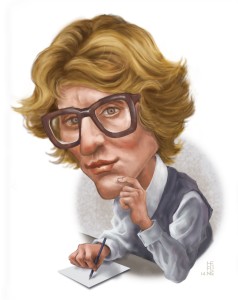 Falaise. Even the aging Jean Cocteau makes an appearance in an early Dior-period scene, and we can’t help but suspect that the young man with the full head of platinum hair lounging on the cushions in the Marrakech home is meant to suggest Andy Warhol. As a contrast to the staid conventions of the 1950s, the late ’60s and ’70s scenes throw us into a corner of bohemian privilege likewise threatened by the period’s left-wing revolutionary fervor.
Falaise. Even the aging Jean Cocteau makes an appearance in an early Dior-period scene, and we can’t help but suspect that the young man with the full head of platinum hair lounging on the cushions in the Marrakech home is meant to suggest Andy Warhol. As a contrast to the staid conventions of the 1950s, the late ’60s and ’70s scenes throw us into a corner of bohemian privilege likewise threatened by the period’s left-wing revolutionary fervor.
Pierre Niney gives an outsized performance. Saint Laurent was hardly a heartthrob; his heavy black frame glasses gave him a nerdy demeanor. Niney, slender and doe-like, has a face that, on a woman, the French would call jolie laide—a slightly “off” quality that lends its owner an atypical beauty, an attraction that goes beyond conventional categories. Niney’s physical appeal is just that—and his performing arc from timidity to strength of will, from awkward public player to private and endearing friend, from passionate young lover to mature cynic—is a fascinating account of a quiet genius at war, first with himself and then with public expectations. Like the aria from La Wally that underscores one of the designer’s greatest runway triumphs, Yves Saint Laurent is operatic in its emotional temperatures.
YOU HAVE TO HAND IT to the French for making a biopic about a writer known in the United States, if at all, only in academic and feminist circles. Of course, Violette, an examination of the ravaged emotional and romantic life of a deeply personal writer who found her greatest supporter in the far more famous Simone de Beauvoir, was not targeted for an American audience. And it hardly matters if you have never heard of Violette Leduc. Martin Provost’s film is a steadily absorbing account of an insecure woman coming of age in Nazi-occupied France, struggling to find her emotional balance and her voice, feeling ugly and unloved, who drove her friends to distraction and her small circle of literary companions and mentors nearly to despair. Born out of wedlock, Violette’s relations with her mother were constantly fraught, and during the harsh wartime and its aftermath, she relied on the black market to earn a living and acquire what few creature comforts—especially food—sustained her.
Spurred to her earliest literary efforts by the homosexual writer Maurice Sachs, an ethically suspect character rumored to have collaborated with the Nazis, she finds the wherewithal to deliver her first book-length manuscript, anonymously, to the door of Simone de Beauvoir, already a known literary figure. “Castor”—as Jean-Paul Sartre called de Beauvoir, his longtime companion—immediately recognizes a unique voice in Leduc and helps get her first book published with the prestigious house Gallimard.
Provost and his co-screenwriters have chosen a literary format to tell their story. The film proceeds in a series of chapters, each named for a character who enters Violette’s life as she struggles to gain recognition in an already crowded postwar literary field. Fortunately, despite her alternately aggressive and defensive behavior, she is introduced to literary notables like the former convict Jean Genet, himself championed by Jean-Paul Sartre, and the wealthy manuscript collector Jacques Guérin, heir to the Parfums d’Orsay fortune. Aware of her shame as illegitimate, the two men proudly proclaim their similar bastard status, turning it into an emblem of defiance. Yet Violette is slow to understand that Guérin’s homosexuality disqualifies him as a suitable love interest. Perhaps she allows for the possibility because her own sexual identity is rather more fluid. While her essential interest seems to be in women, she has had a youthful marriage and an abortion, and earlier she pined for Maurice Sachs’ attentions despite his unreliability.
However, Violette—the socially awkward “ugly duckling”—misconstrues Simone de Beauvoir’s professional and sympathetic counsel, twisting Violette toward sexual jealousy and a near stalker obsession. De Beauvoir, at once deeply intellectual and worldly, negotiates her acolyte’s emotional demands with steely skill. Indeed, the push-and-pull between the two women is a mother-daughter conflict on a higher plane, the only difference being the erotic undercurrent on Violette’s side.
In the end, the film concentrates on the power differential between the operatically emotional Violette, whose writing, we come to understand, is an angry cry from the heart, and the coolly rational de Beauvoir. As Violette, Emmanuelle Devos gives a courageous performance, daring us to find her as annoying as some of her friends do. But her “bad” behavior is revealed as so much the product of emotional and psychic deprivation that we root for her in spite of ourselves. Sandrine Kiberlain plays de Beauvoir with appropriate sang-froid and reserve as the primly elegant Castor’s career jumps ever higher toward her groundbreaking The Second Sex, a feminist manifesto hardly appreciated by her male counterparts in the phallocratic postwar world of Parisian letters. Violette’s sexual jealousy of Simone mixes with professional envy—a heated, enraging envy that we’ve already seen displayed at a rehearsal of her friend Genet’s The Maids—yet de Beauvoir forces Leduc to reckon with her demons through writing books of piercing honesty.
Leduc was possibly the first French woman to describe her sexual awakening with another girl at school, or to detail adult sexual experience of the kind that only men could traditionally write about. At de Beauvoir’s urging, Leduc makes public her past abortion at a time when the procedure was still illegal in France. The story moves toward Leduc’s first great public success after more than a decade of struggle. La Bâtarde (The Bastard) made her popular, it would seem, not despite but because of its unflinching emotionality and nakedness.
Violette is as much a film about the loneliness of the long-distance artist as it is an examination of a woman’s frantic quest to speak her own truth in her own voice. To peg it as a feminist or lesbian film because its themes so manifestly speak to those issues would be to miss another point: that to be an artist is often equivalent to being an outsider in one’s own homeland.
Allen Ellenzweig is the author of The Homoerotic Photograph (1992) and a frequent contributor to these pages.


